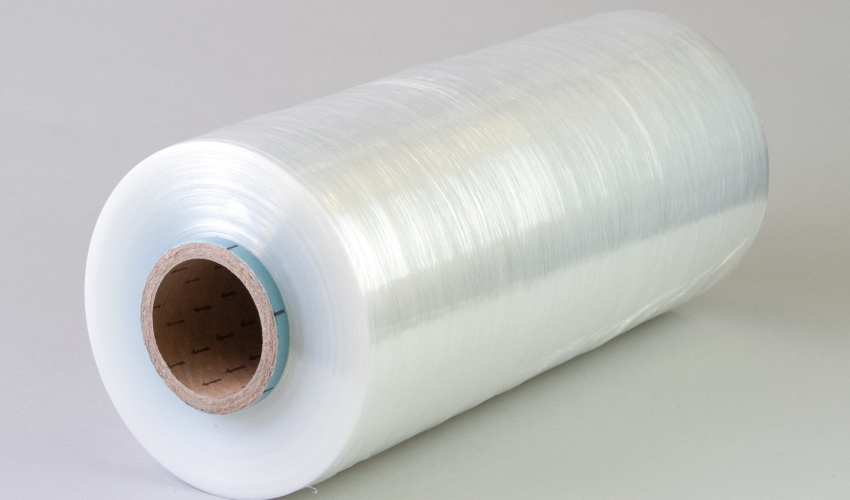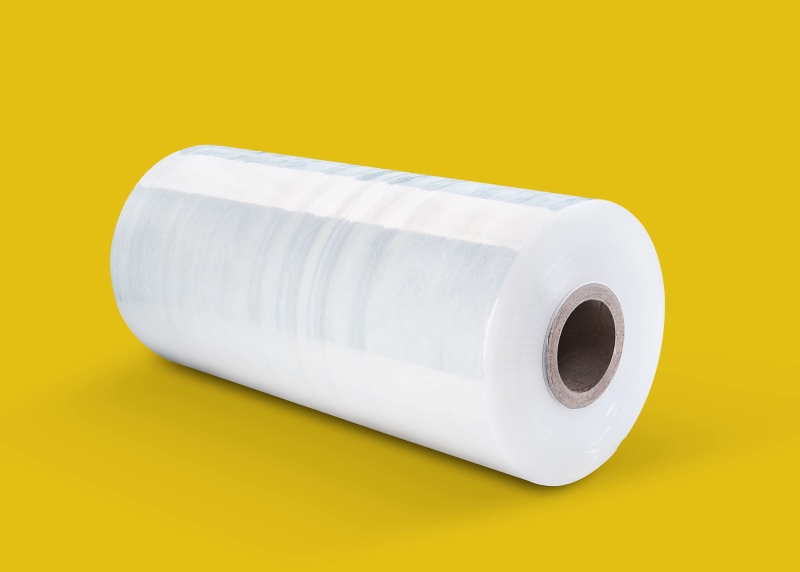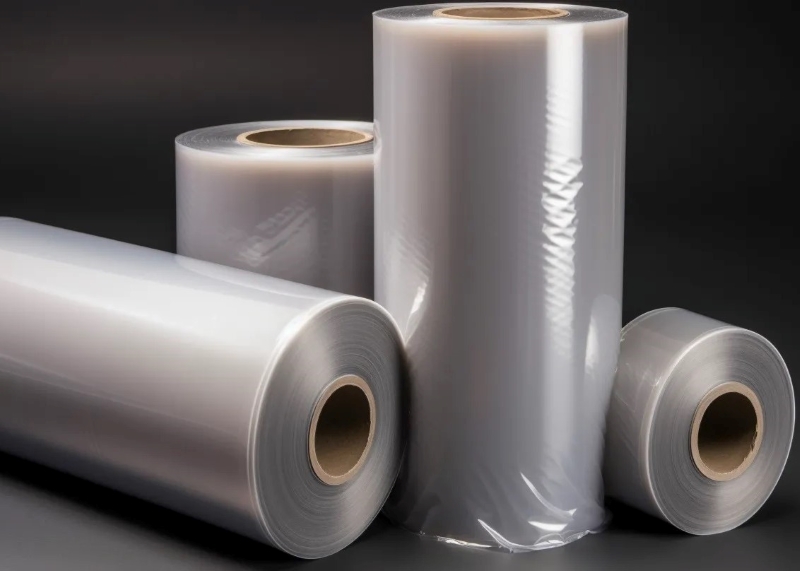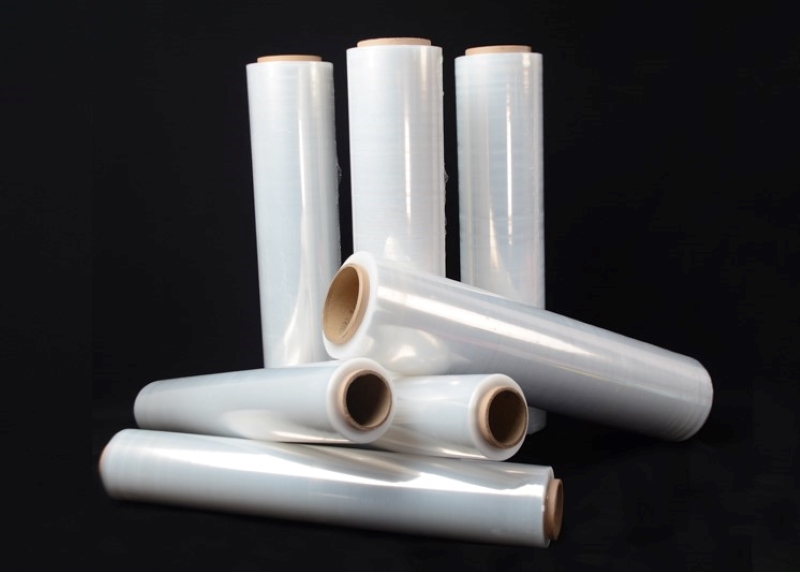
Stretch films are essential packaging materials used widely in industrial and logistics applications to secure and protect loads during transportation and storage. They provide excellent support for heavy and bulky items, preventing damage and ensuring product integrity. Among the various types of stretch films, similar to the pre-stretch film, high yield stretch film also stands out due to its superior performance. Engineered to stretch further than traditional films, it allows users to cover more area with less material, resulting in reduced waste and lower overall costs. The high yield stretch film not only enhances load stability but also offers improved puncture and tear resistance, making it an ideal choice for businesses looking to optimize their packaging processes while maintaining product safety. High yield stretch film provides excellent load stability, tear resistance, transparency, and high pre-stretching, ideal for heavy-duty applications.
High yield stretch film is a specially engineered packaging material designed to optimize performance in securing loads. Its unique composition allows it to stretch further than traditional stretch films, making it ideal for stretch wrap for logistics. This capability enables it to cover a larger surface area using less material, making it a preferred choice for various industrial and logistics applications, where efficiency and effectiveness are paramount.

High yield stretch film is crafted from advanced polymer materials that enhance its elasticity and strength. Unlike conventional films that may limit the amount of stretch achievable, high yield stretch film is formulated to maintain high tensile strength while being stretched to its maximum capacity. This engineering innovation ensures that it adheres securely to products, maintaining stability during transportation and storage.
The advantages of using high yield stretch film are numerous, making it an ideal option for businesses looking to improve their packaging operations. Here are some key benefits:
To better understand the advantages of high yield stretch film, it’s helpful to compare it with traditional stretch film. The following table outlines key differences between the two:
| Feature | High Yield Stretch Film | Traditional Stretch Film |
|---|---|---|
| Stretchability | Up to 300% | Typically up to 200% |
| Coverage per roll | Higher coverage with less film | Lower coverage, requiring more film |
| Waste | Minimal waste due to efficient use | More waste due to excess material usage |
| Load security | Superior cling and puncture resistance | Standard cling, less effective |
By evaluating these factors, businesses can see the clear advantages of switching to high yield stretch film for their packaging needs.
High yield stretch film is not just about stretching further; it also boasts several performance characteristics that enhance its utility in various applications:
High yield stretch film, including reinforced stretch film represent significant advancements in packaging technology. Their ability to stretch further while maintaining high load security, combined with reduced waste and increased coverage, makes them indispensable tools for businesses in logistics and warehousing. As companies continue to seek ways to optimize their operations and minimize costs, the adoption of high yield stretch film and reinforced stretch film is likely to become increasingly prevalent. By choosing these innovative solutions, businesses can enhance their packaging processes and improve overall efficiency, ensuring that they remain competitive in a demanding market.
The cost-efficiency of high yield stretch film makes it a smart choice for businesses seeking to optimize their packaging operations. By understanding the high yield stretch film cost compared to traditional films, companies can make informed decisions that lead to significant financial benefits. High yield stretch film may have a higher upfront price; however, its long-term advantages far outweigh the initial investment.
The benefits of high yield stretch film extend beyond its initial cost. Here are several key areas where it provides cost savings:
Several other factors contribute to the cost-efficiency of high yield stretch film, further reinforcing its value as a packaging solution:
The cost-efficiency of high yield stretch film is evident when comparing it to traditional films. While the initial investment may be higher, the long-term savings from reduced film usage, decreased shipping damage, and lower labor costs make it a wise choice for businesses looking to enhance their packaging operations. By adopting high yield stretch film, companies can achieve not only financial benefits but also improved operational efficiency, contributing to overall success in an increasingly competitive marketplace.
Understanding the pricing of high yield stretch film is essential for businesses that aim to make informed purchasing decisions. While the high yield stretch film price can initially seem higher than that of traditional films, several factors contribute to this cost, which can ultimately lead to significant long-term savings. By analyzing these factors, companies can appreciate the value of high yield stretch film in their operations.

The price of high yield stretch film is influenced by various factors, each of which plays a critical role in determining its overall cost:
When comparing the prices of high yield stretch film with traditional stretch films, it is essential to consider not only the initial costs but also the potential for long-term savings. The following table outlines a comparison of average pricing and features:
| Feature | High Yield Stretch Film | Traditional Stretch Film |
|---|---|---|
| Average Cost per Roll | Higher due to advanced materials | Generally lower initial cost |
| Coverage per Roll | Higher coverage (less material needed) | Lower coverage (more material needed) |
| Longevity | Longer-lasting performance | Shorter lifespan and durability |
| Waste Reduction | Significant reduction in waste | Increased waste due to excess usage |
Despite the higher initial cost of high yield stretch film, the benefits it provides can lead to substantial long-term savings. Here are several ways in which these savings manifest:
In conclusion, wWthe advantages it offers in terms of performance and cost-efficiency make it a valuable investment for businesses. By considering the factors that influence its pricing and recognizing the long-term savings associated with its use, companies can make informed decisions that enhance their packaging operations. The overall value of high yield stretch film extends beyond its initial cost, positioning it as a superior choice for businesses aiming to improve their efficiency and effectiveness in the logistics and packaging sectors.
Choosing the right packaging material is essential for businesses that rely on efficient logistics and effective product protection. High yield stretch film stands out as an optimal solution due to its numerous advantages that enhance performance and sustainability. Understanding these benefits can help businesses make informed decisions that positively impact their operations and the environment.
In addition to the major advantages mentioned above, several other factors make high yield stretch film a wise choice for businesses:
The choice to use high yield stretch film, such as new tech stretch wrap, presents a multitude of advantages that enhance both operational efficiency and sustainability. Its superior performance under stress, coupled with significant cost savings and environmental benefits, make it a superior packaging solution. By opting for stretch film capacity, businesses not only protect their products more effectively but also contribute positively to their sustainability goals. Ultimately, the investment in high yield stretch film is a strategic decision that supports a company’s commitment to quality, efficiency, and environmental responsibility.
High yield stretch film is designed to deliver exceptional performance in demanding packaging applications. It stretches up to 250%, ensuring optimal load stability while minimizing material usage. The film’s transparency offers excellent clarity, making it easy to identify products during storage or transit. Its smooth and quiet application process enhances efficiency, especially in environments requiring minimal noise.

The film features reinforced edges to prevent tears and creasing, providing greater durability and reliability during wrapping. It supports high mechanical packaging speeds, making it an ideal choice for automated processes and heavy-duty loads. Additionally, its superior tear resistance ensures secure wrapping even for irregular or sharp-edged items, while maintaining high clarity for easy inspection. These characteristics make high yield stretch film a cost-effective and practical solution for businesses prioritizing efficiency, durability, and load protection.
High yield stretch film significantly reduces costs through multiple aspects:
Material Efficiency: With its superior strength and stretchability, high yield stretch film uses nearly 50% less material than traditional films while maintaining or enhancing packaging quality.
Lower Transportation Costs: The reduced film usage leads to lighter pallet loads, decreasing shipping and handling expenses.
Increased Productivity: Its high pre-stretching levels and compatibility with high-speed packaging machines minimize downtime and improve wrapping efficiency, reducing labor costs.
Enhanced Durability: The film’s high puncture and tear resistance reduces the likelihood of packaging failures, minimizing product loss or damage during transit.
Eco-Friendly Savings: Using less material means lower waste disposal costs and compliance with sustainability goals, which can also enhance a company’s market reputation.
Reduced Storage Requirements: The thinner, lighter rolls take up less space, decreasing warehousing costs.
These combined benefits make high yield stretch film an economical and efficient choice for businesses.
When selecting the right stretch film, it’s essential to understand the similarities and differences between high yield stretch film, standard stretch wrap, and pre-stretch film to make an informed choice.
By understanding these distinctions, businesses can choose the right product based on load type, application method, and cost considerations.
Blown film and stretch film are both widely used in packaging, but they serve different purposes and are manufactured using distinct processes. Blown film refers to a type of plastic film produced through the blown film extrusion process. In this method, molten plastic is forced through a circular die and inflated into a bubble, which is then cooled and flattened. This process results in a film that is generally thicker and stronger, making it suitable for various applications, including industrial packaging and agriculture.
On the other hand, stretch film is a specific type of blown film that is designed to be stretched and wrapped around products. Its primary purpose is to secure items on pallets during transportation and storage. Stretch film has excellent cling properties, allowing it to hold loads tightly together without the need for additional adhesives. While both blown film and stretch film are essential for packaging, the key difference lies in their manufacturing processes and intended uses, with blown film being more versatile in application and stretch film specializing in load stability.
Cling film and stretch film are both used for wrapping, but they have different properties and applications. Cling film, often referred to as plastic wrap, is typically made from low-density polyethylene (LDPE). It is thin and designed to cling tightly to surfaces, making it ideal for covering food items to preserve freshness. Cling film creates an airtight seal that helps keep food fresh and free from contamination, making it a popular choice in households, catering, and food service industries.
In contrast, stretch film is thicker and more robust, specifically engineered for securing and stabilizing products on pallets during transport. It is often made from linear low-density polyethylene (LLDPE), which gives it excellent stretchability and strength. Stretch film is designed to stretch up to 300%, allowing it to wrap tightly around items without tearing. While both films can adhere to surfaces, cling film is primarily focused on food preservation, while stretch film is geared toward industrial applications, providing load stability and protection during shipping and storage.
High-performance stretch film is an advanced type of stretch film engineered to provide superior performance in wrapping and securing palletized goods. It is designed for optimal elongation, strength, and puncture resistance, allowing for minimal film usage while maximizing load stability. Unlike standard stretch films, high-performance versions are made from enhanced materials, such as multilayer polyethylene blends, which provide exceptional durability and holding force. These films are often thinner than conventional films but deliver higher yield, making them cost-effective and eco-friendly.
The “high yield” attribute means that less material is required to achieve the desired wrapping strength, reducing waste and transportation costs. High-performance stretch film is commonly used in industries like logistics, manufacturing, and retail, where efficiency and sustainability are priorities. It offers consistent performance in automated or manual wrapping applications, ensuring a secure load during storage or transit while reducing the carbon footprint of packaging operations.
Stretch wrap and stretch film refer to the same general packaging material, but the terms can sometimes indicate subtle differences in context. Stretch film is a broader term used for the material itself—thin, flexible plastic film made from linear low-density polyethylene (LLDPE). On the other hand, stretch wrap refers more specifically to how the film is used to secure and stabilize items during packaging or shipping.
When discussing high-yield stretch film, the focus is on the material’s advanced properties, such as its enhanced elasticity, durability, and eco-friendly benefits. These qualities make it a superior choice for stretch wrapping processes. High-performance stretch films can stretch further than standard films while maintaining excellent holding strength, ensuring fewer wraps are needed. This distinction helps reduce material waste and enhances the cost-effectiveness of wrapping large or irregularly shaped loads.
Stretch films can be categorized into several types based on application and performance characteristics. The main types include:
Hand Stretch Film: Designed for manual application, often used in smaller operations.
Machine Stretch Film: Made for use with stretch-wrapping machines, ensuring consistent application.
Blown Stretch Film: Known for its strength and puncture resistance, suitable for heavy-duty loads.
Cast Stretch Film: Provides clarity and smooth application, ideal for lighter loads.
Pre-Stretched Film: Pre-elongated, requiring less effort during application and reducing operator fatigue.
Colored or Tinted Film: Helps in product identification and security.
Specialty Stretch Films: Includes UV-resistant, anti-static, or high-performance (high-yield) films.
High-yield stretch films fall under specialty films, focusing on maximizing efficiency with minimal material usage. They combine high elasticity, reduced thickness, and advanced durability to meet modern packaging demands.

My name is James Thompson, and I’m the editor of this website dedicated to Stretch Film, Pallet Wrap, and Stretch Wrap products.
My passion for packaging began when I noticed the challenges companies face in securing their products efficiently for transportation and storage. This inspired me to delve deep into the world of stretch films and pallet wraps, exploring the latest technologies and best practices.
I aim to provide valuable insights, practical tips, and up-to-date industry trends to assist you in making informed decisions. Whether you’re a small business owner or part of a large corporation, my goal is to support you in optimizing your operations and ensuring your products reach their destination safely.
Thank you for visiting, and I look forward to accompanying you on your journey toward better packaging solutions.
Comments are closed